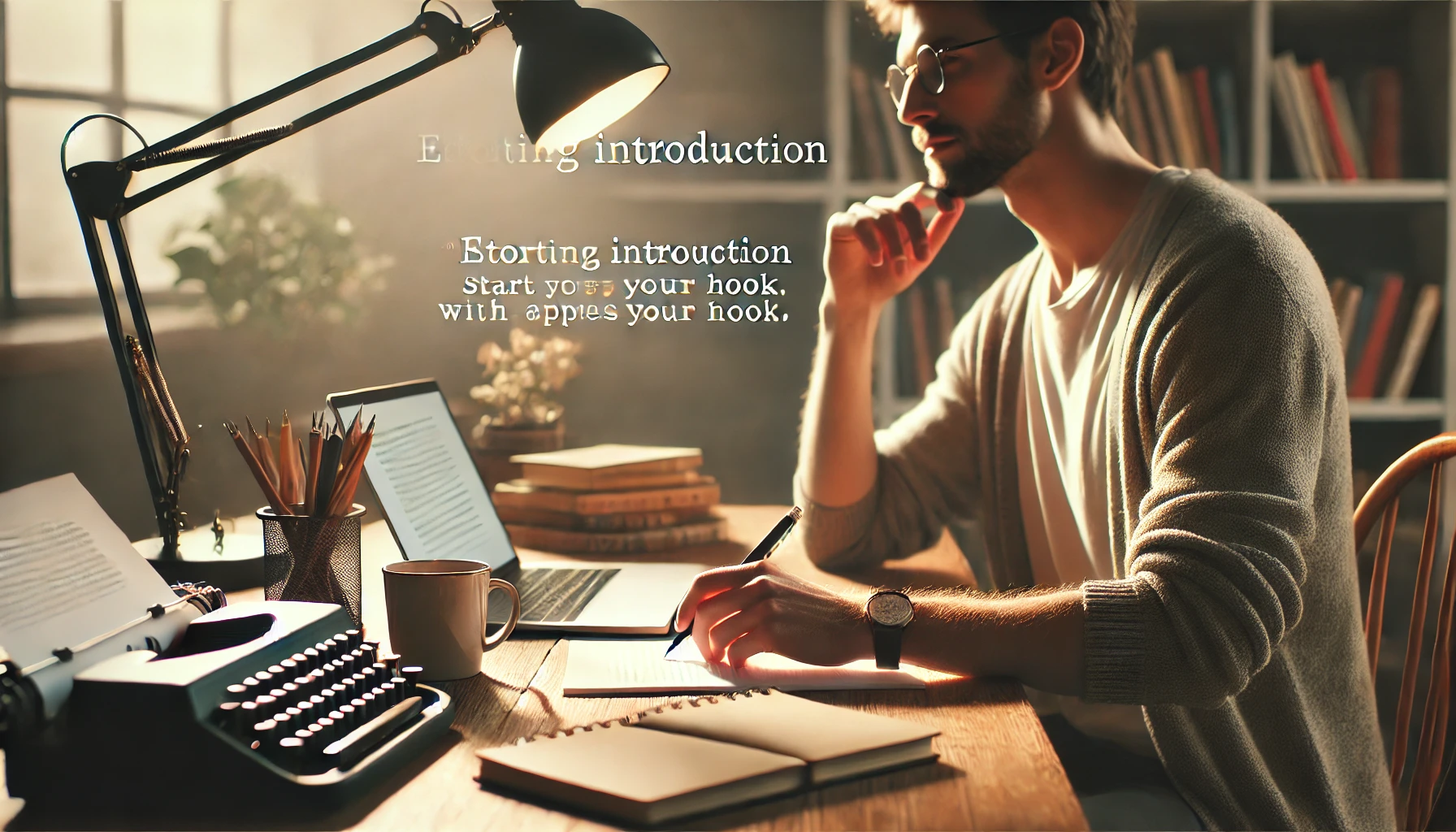The introduction is one of the most important parts of any piece of writing. It’s the first impression you make on your reader, and it can determine whether they’ll continue reading or not. A well-crafted introduction grabs attention, sets the tone, and clearly communicates what the content will be about. Whether you’re writing a blog post, essay, or even a social media post, knowing how to create compelling introductions is key. Here’s how to write introductions that captivate and engage your readers from the start.
1. Start with a Hook
The opening sentence is your chance to capture the reader’s attention. A compelling hook draws them in and makes them want to read more. The goal is to spark curiosity, surprise, or interest right away.
- How to create a hook: Start with a question, a surprising fact, an intriguing statement, or an anecdote. For example, “Did you know that nearly 50% of readers abandon a blog post after just a few sentences?”
- Why it works: A hook grabs the reader’s attention immediately, piquing their interest and encouraging them to continue reading.
2. Be Clear About the Value You Offer
Your readers want to know why they should keep reading. They’re looking for something valuable or helpful. Make it clear from the beginning what benefits they’ll gain from your content.
- How to communicate value: In the introduction, briefly explain what the reader will learn, discover, or benefit from reading the rest of your content. For example, “By the end of this post, you’ll know the best strategies for writing powerful introductions.”
- Why it works: When readers understand the value they’ll get, they’re more likely to stay engaged and continue reading.
3. Address the Reader Directly
Engage the reader by speaking directly to them. Using words like “you” or “your” helps create a personal connection and makes the content feel more relevant and relatable.
- How to address the reader directly: Use direct language in your introduction, such as “If you’ve ever struggled with writing engaging content…” or “You’ll learn how to create captivating introductions in just a few simple steps.”
- Why it works: Directly addressing the reader creates a sense of intimacy and connection, making them feel like the content is tailored specifically to them.
4. Create a Sense of Urgency
A strong introduction can create a sense of urgency, making readers feel like they need to continue reading right away to avoid missing out on valuable information.
- How to create urgency: Use phrases that convey the importance of the content, like “Don’t miss out on these tips,” or “This is the information you need right now.”
- Why it works: Urgency motivates readers to act quickly, keeping them engaged and interested in what comes next.
5. Provide Context or Background Information
For complex topics or unfamiliar subjects, providing context or background information in the introduction can help set the stage for the rest of the content. This allows readers to understand why the topic is important and why they should care.
- How to provide context: Briefly explain why the topic is relevant, and provide any necessary background or historical information. For example, “In recent years, the rise of social media has dramatically changed the way people consume content.”
- Why it works: Providing context helps readers understand the relevance of your content, making them more likely to stay engaged and continue reading.
6. Keep It Short and Concise
While it’s important to make your introduction compelling, it’s equally important to keep it concise. Avoid unnecessary details or overly long explanations, which can cause the reader to lose interest before they even reach the body of the content.
- How to keep it concise: Focus on getting straight to the point. State what the content will cover, introduce the value, and grab attention in just a few sentences.
- Why it works: Short and concise introductions respect the reader’s time, making them more likely to read the rest of your content.
7. Use an Anecdote or Story
Stories are a powerful tool for connecting with readers on an emotional level. Starting with a personal anecdote or a relevant story can draw readers in, making them more invested in the content.
- How to use a story: Share a brief personal experience, a case study, or a story that ties into the topic. For example, “When I first started writing, I struggled with crafting the perfect introduction. But after experimenting with different strategies, I discovered a few key techniques that made a huge difference.”
- Why it works: Stories engage the reader’s emotions, making them feel more connected to the content and more likely to keep reading.
8. State the Problem You’re Solving
Identifying a problem your reader may be facing and stating how your content will solve it is a great way to engage the reader from the start. People are naturally drawn to content that helps them solve their problems or answer their questions.
- How to state the problem: Clearly outline the challenge or issue that the reader may be facing. For example, “If you’ve ever found yourself stuck with a blank page and no idea where to start, you’re not alone.”
- Why it works: Stating the problem helps the reader identify with your content and makes them feel like you have the solution they’re looking for.
9. Ask a Provocative Question
Asking a thought-provoking question in your introduction encourages the reader to think about the topic and sparks their curiosity about the answer. It invites them to engage with the content on a deeper level.
- How to ask a question: Start with a question that challenges conventional thinking or taps into the reader’s curiosity. For example, “What if I told you that everything you’ve been taught about writing introductions is wrong?”
- Why it works: A provocative question immediately engages the reader’s mind, making them want to read more to find the answer.
10. Preview the Structure of the Content
In some cases, it’s helpful to give the reader a preview of what to expect in the content. This lets them know how the information will be organized and what they can expect to learn.
- How to preview the structure: Briefly outline the main points or sections of the content. For example, “In this article, we’ll cover the top strategies for writing effective introductions, from crafting compelling hooks to making your conclusion memorable.”
- Why it works: A preview helps the reader understand the structure of your content and gives them a clear roadmap of what they can expect.
Conclusion: Craft Introductions That Draw Readers In
Writing a compelling introduction is an essential skill for any writer. By using hooks, providing context, addressing the reader directly, and offering value, you can create introductions that captivate your audience and encourage them to keep reading. Remember, the introduction sets the tone for the entire piece, so make it count.

